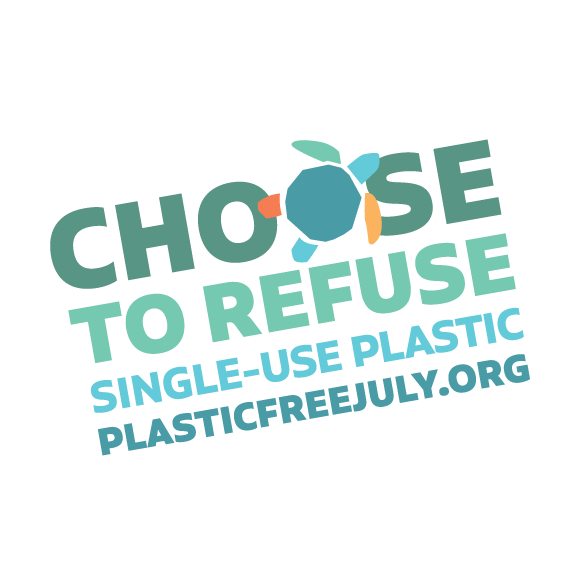
In a 2017 article in the journal Science Advances, researchers Roland Geyer, Jenna R. Jambeck, and Kara Lavender Law estimated that as of 2015 “approximately 6300 Mt of plastic waste had been generated, around 9% of which had been recycled, 12% was incinerated, and 79% was accumulated in landfills or the natural environment. If current production and waste management trends continue, roughly 12,000 Mt of plastic waste will be in landfills or in the natural environment by 2050.” With microplastics having been detected in virtually every habitat on Earth, including the ocean floor, and in a variety of organisms, including humans, it’s easy to understand why the U.S. Environmental Protection Agency (EPA) recently released a draft National Strategy to Prevent Plastic Pollution, as described in a previous post (Note: The deadline for the public comment period has been extended to July 31, 2023, so don’t miss out on the chance to read the strategy and provide feedback). It’s also easy to understand why delegates from nearly 180 countries came together in Paris recently, to discuss what would be the first legally binding global treaty to reduce plastic pollution. The first draft of that treaty is scheduled to be developed by November 2023, with a goal of having a final agreement in force by 2025.
For a dozen years now, people have taken time in July to consider ways they might help stem the tide of plastic pollution. Plastic Free July is an initiative of the Plastic Free Foundation which began in 2011 and has grown into a global movement to reduce single-use plastic consumption and pollution. You can sign up to take the Plastic Free July Challenge, and receive weekly emails in July to inspire and motivate your plastic reduction efforts. To help get you started the Plastic Free July website offers tips on ways to reduce single-use plastic. You can probably guess some of the tips which have become common mantras among those interested in waste reduction, such as using a refillable mug instead of accepting single-use coffee cups or bringing reusable bags when you go grocery shopping instead of packing your items home in plastic carrier bags. But the tips below might surprise you and inspire you to think about just how ubiquitous single-use plastic has become.
Note: ISTC does not endorse, either explicitly or implicitly, any particular manufacturer, vendor, product, or service. Information about specific products, manufacturers or vendors is provided for reference only.
- Chew less gum and/or opt for plastic-free alternatives. It may surprise you to know that chewing gum, based on the indigenous tradition of chewing natural rubber called chicle, involves single-use plastic in its actual substance and not just in its packaging. According to the website Plastic Free Shopper, “Most modern chewing gums have what’s known as a gum base which makes up the majority of the chewing gum. This synthetic rubbery substance is commonly made from ingredients including: Butadiene-styrene rubber Isobutylene-isoprene copolymer (butyl rubber); Paraffin (via the Fischer-Tropsch process); Petroleum wax; Polyethylene; Polyisobutylene; Polyvinyl acetate. This synthetic plastic/rubber gum base is mixed with sweeteners and flavourings to make up regular chewing gum as we know it. Ingredients such as Polyethylene and Polyvinyl acetate are both common forms of plastic. Polyethylene is found in items such as plastic bottles and food containers, and Polyvinyl acetate is used in glues and adhesives.” So, when people spit their gum out on the sidewalk, they’re not just littering and setting the innocent up for sticky shoes–they’re also contributing to plastic pollution. If you enjoy chewing gum, a simple way to reduce your single-use plastic consumption is to opt for brands made with natural chicle, such as Simply Gum or Glee, among others.
- Take plastic out of your water filtration equation. If you’re avoiding water in disposable plastic bottles, odds are you might be using a reusable bottle or pitcher with a filter. However, the more popular units for this purpose still incorporate plastic in the filters. In October 2022, editors of The Good Trade shared their top five plastic-free water filtration options. It should be noted that most of these are pretty pricey and the filter cartridges for the plastic-free vessels still tend to incorporate some small amount of plastic. But the Kishu charcoal stick option is quite affordable, completely plastic-free, and after its days as a water filter are over, the sticks can be composted, put out in your garden, or reused to absorb odors in your refrigerator.
- Quit smoking—or encourage a friend or family member to do so if you’re a non-smoker. There are obvious health-related reasons to do this, but did you know that cigarette butts are the most common form of plastic pollution? A 2019 review article in Environmental Research explained that “Cigarette butts (CB) are the most frequent form of personal item found on beaches. Yearly, 6 trillion cigarettes are smoked worldwide, and 4.5 trillion cigarettes are littered in the environment.” Once they have become litter, cigarette butts degrade into microplastics. E-cigarettes and plastic vape cartridges also contribute to the plastic pollution problem, as well as contributing to the burgeoning tide of e-waste (that’s another post for another day). Learn more at “Plastics, the Environment, and the Tobacco Industry,” an online resource from the University of Bath.
- Dispose of pet poo without plastics. If you have a dog, or a cat whose litter box needs to be scooped, disposable plastic bags are probably a commonly used tool. It’s definitely important to pick up your dog’s poo during a walk (see this article from The Guardian and this page from the Dooloop website for more on the environmental impacts of your best friend’s excrement), but there are ways to take care of this business with less petroleum-based plastic. The Dog People list their choices for plant-based pet waste bags that are “compostable under the right conditions.” If you have a yard with available space, you might also consider a separate compost pile or bin for pet waste (avoid using this compost on your fruit or vegetable garden to prevent the spread of parasites, but feel free to fertilize your flowers and other ornamental plants). Doogie Dooley offers in-ground digester systems for breaking down dog waste (they’re not compatible with cat waste, sadly), and though all incorporate plastic lids, there is a model with a steel tank. I Love a Clean San Diego also highlights some pooper scoopers and disposal tips that allow you to pick up waste without using a dedicated plastic bag.
- Reduce your use of laser printers and copiers when possible. We all know that printer ink and toner cartridges contribute to the plastic waste stream, so many of us recycle our spent cartridges and purchase remanufactured ones to reduce consumption of virgin plastics. But did you ever stop to think about what laser printer and copier toner is made of? Spoiler alert—toner is mostly made of plastic. We’ve all seen reminders to print documents or emails only when necessary to save paper, but it turns out, this is a good tip to avoid plastic consumption too. If you’ve ever added shredded office paper or junk mail printed on non-slick paper to your compost bin, you might reconsider and put those in the paper recycling bin instead. Toner starts out as a collection of microplastics, so when that printed paper breaks down in a compost pile, you might be inadvertently releasing those into your environment. This Federal Electronics Challenge resource from the US EPA includes tips for reducing paper and ink usage. See this post from CDW on the differences between ink and toner, and you might also consider bio-based toner options available in your country. Some of these reduce the amount of petroleum-based plastic involved by using powder made from soybean oil. Some bio-based toners also use a percentage of bio-plastics for the cartridges themselves, such as https://pelikan-printing.com/biobased and https://www.union-tec.com/print-rite-bio-based-toner-cartridges/.
This post is already quite long, so we’ll stop at five tips, but there are many more ways to reduce single-use plastics. What are your favorites? Share your thoughts on social media.
- Engage with Plastic Free July at https://www.facebook.com/PlasticFreeJuly/ or https://twitter.com/PlasticFreeJuly.
- Engage with ISTC at https://www.facebook.com/ISTCatUIUC or https://twitter.com/ISTCatUIUC.
- Engage with post author & ISTC Technical Assistance Program staff member, Joy Scrogum at https://twitter.com/JoyScrogum or https://www.linkedin.com/in/joyscrogum/.
- You can also submit a video highlighting a plastic-free step you’re taking to the Plastic Free July website at https://www.plasticfreejuly.org/campaigns/submit-your-video/.

